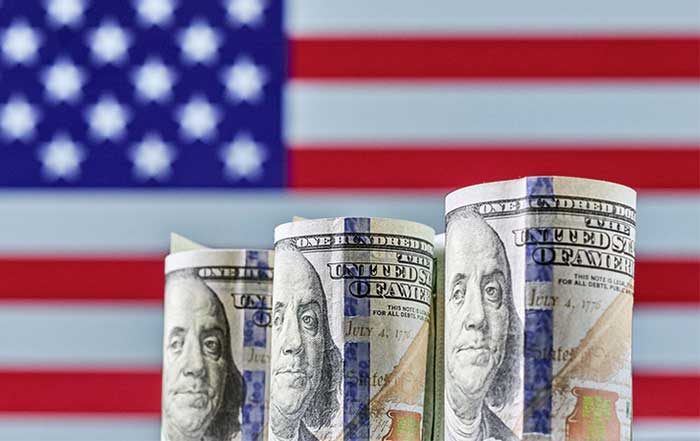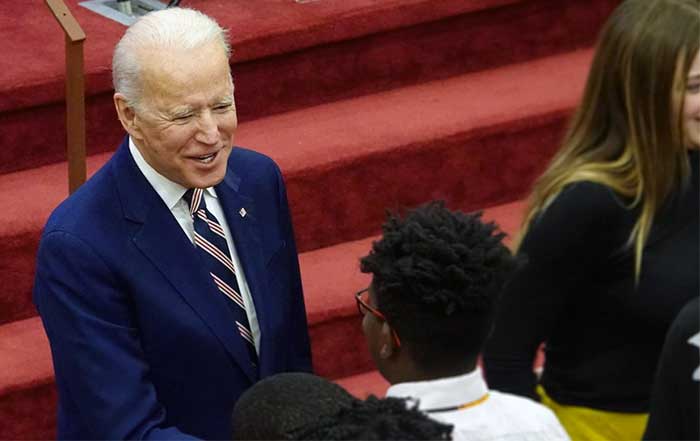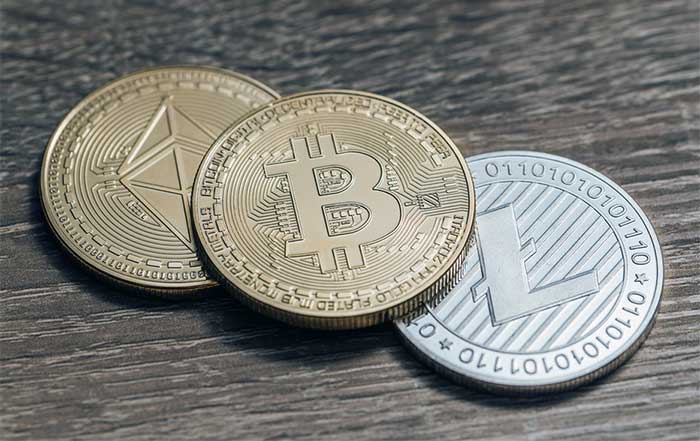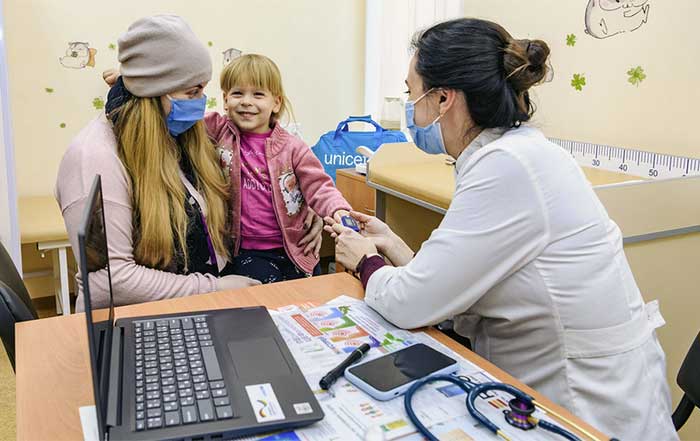How Regulation Shaped the American Economy: From Colonial Markets to the AI Age
The economic story of the United States is, at its core, a story about rules-who sets them, who benefits from them, and how they evolve in response to crises, innovation, and political conflict. For readers of usa-update.com, whose interests range from the latest economic indicators to developments in technology, energy, employment, and global trade, understanding this regulatory history is not a matter of academic curiosity; it is a way to interpret the forces that are reshaping business models, investment strategies, and job markets in 2026 and beyond.
From the mercantilist constraints of the colonial era to the complex frameworks now governing artificial intelligence, climate policy, and cross-border finance, economic regulation in the United States has repeatedly swung between expansion and retrenchment. Each swing has left an institutional legacy, embedding expectations of stability, fairness, and accountability that global investors, workers, and consumers still rely on today. At the same time, each regulatory wave has triggered new debates about competitiveness, innovation, and the proper role of government-debates that now extend from Washington to Brussels, Beijing, Singapore, and other global financial and technology hubs.
This article traces that journey across major eras, drawing out lessons that matter to business leaders, policymakers, and professionals navigating the modern economy. It highlights how regulatory choices have influenced growth, employment, and international influence, and it connects those historical patterns to the current conversations about digital platforms, climate risk, and financial stability that dominate headlines on news and policy pages today.
Colonial Foundations and the Early Republic: Markets Under Constraint
The origins of the American economy lie in a world where economic policy was not set in Philadelphia or Washington, but in London, under a mercantilist framework that saw the colonies primarily as suppliers of raw materials and consumers of British manufactured goods. Tobacco from Virginia, rice from the Carolinas, timber and furs from New England, and later cotton from the South were all funneled into trade routes designed to benefit the British Empire, supported by laws such as the Navigation Acts that restricted colonial trade with other nations.
This environment limited local financial development and industrial diversification, but it also cultivated a culture of commercial ingenuity. Colonial merchants, planters, and shipowners developed sophisticated networks of credit and barter to compensate for the scarcity of hard currency. The financial strains of the Revolutionary War, when the Continental Congress issued paper money that quickly depreciated, underscored the dangers of weak monetary institutions and fragmented fiscal authority. The failure of the Continental currency left many early American leaders convinced that a stable national financial system was essential to economic independence and long-term prosperity.
In the 1790s, this conviction crystallized into one of the most consequential policy debates in U.S. history: the clash between Alexander Hamilton and Thomas Jefferson. Hamilton, serving as the first Secretary of the Treasury, envisioned a strong central government capable of managing public debt, issuing stable currency, and fostering domestic manufacturing through a national bank and targeted support for industry. Jefferson, by contrast, feared concentrated federal power and financial elites, advocating instead for an agrarian republic of small landholders and limited central authority.
The creation of the First Bank of the United States in 1791 represented an early assertion of federal power over finance, providing a mechanism for managing government debt and stabilizing currency. Yet the bank remained politically controversial and was allowed to expire in 1811. The subsequent oscillation between centralized and decentralized banking structures, punctuated by the Second Bank of the United States and its demise under President Andrew Jackson, established a pattern: American regulation would evolve through intense political conflict, with financial stability and democratic suspicion of concentrated power in perpetual tension.
For contemporary readers of usa-update.com, this early era offers a foundational lesson. The United States has always struggled to reconcile its commitment to free enterprise with the need for rules that support trust in money, contracts, and markets, a tension that continues to influence everything from modern banking regulation to the governance of digital assets.
Industrialization, Monopoly Power, and the Birth of Modern Regulation
The 19th century brought a transformation that reshaped the American economy and society: the shift from a predominantly agrarian system to an industrial powerhouse. Railroads, steel mills, textile factories, and telegraph lines reorganized production and communication across the continent, enabling the United States to emerge as a leading industrial nation by the late 1800s. Yet this transformation was accompanied by extreme volatility, recurrent financial panics, and the consolidation of economic power in the hands of a few dominant corporations and financiers.
Railroads, in particular, became the backbone of commerce but also a flashpoint for public anger. Their ability to set discriminatory rates, favor certain shippers, and engage in collusive practices harmed farmers and small businesses, especially in the Midwest and West. As resentment grew, populist and progressive movements demanded federal intervention. The Interstate Commerce Act of 1887 established the Interstate Commerce Commission (ICC), the first major federal regulatory agency, tasked with overseeing railroad rates and practices. This marked a turning point: the federal government was now formally in the business of supervising private enterprise in the public interest.
The Progressive Era of the early 20th century deepened this regulatory trajectory. Industrial titans such as John D. Rockefeller and J.P. Morgan had built vast trusts and holding companies, dominating oil, steel, railroads, and finance. Public concern over monopolistic power and exploitative labor conditions fueled support for antitrust laws and social reforms. The Sherman Antitrust Act of 1890, followed by the Clayton Antitrust Act and the creation of the Federal Trade Commission (FTC), provided tools to challenge anti-competitive behavior and prevent mergers that would substantially reduce competition.
At the same time, investigative journalism and public health scandals-famously captured in Upton Sinclair's exposé of the meatpacking industry-spurred consumer protection legislation. The Pure Food and Drug Act of 1906 and the Meat Inspection Act laid the groundwork for what would become the Food and Drug Administration (FDA), establishing that the federal government had a duty to ensure that products sold to the public were safe and properly labeled.
For modern executives and investors, these developments are more than historical curiosities. They created the template for sector-specific regulators, antitrust enforcement, and consumer safety standards that still shape industries from pharmaceuticals to telecommunications. When contemporary technology platforms confront antitrust scrutiny or when new products require approval before reaching consumers, they are operating within a framework that emerged from these early industrial conflicts. Readers seeking to understand how these legacies influence present-day competition policy can explore related coverage on business and regulation.
Crisis and Reinvention: The Great Depression and the New Deal Order
The stock market crash of 1929 and the subsequent Great Depression exposed the catastrophic potential of underregulated financial markets. A speculative bubble in equities, fueled by margin lending and opaque practices, burst with devastating consequences. Thousands of banks failed, unemployment soared, and deflation eroded incomes and corporate balance sheets. The crisis revealed not only weaknesses in banking supervision but also the absence of mechanisms to protect ordinary savers and investors from systemic shocks.
In response, President Franklin D. Roosevelt and the architects of the New Deal constructed a comprehensive regulatory regime that redefined the relationship between the federal government, financial institutions, and labor markets. The Securities Act of 1933 and the Securities Exchange Act of 1934 mandated disclosure standards for publicly traded companies and created the Securities and Exchange Commission (SEC) to oversee securities markets and enforce rules against fraud and insider trading. These reforms aimed to rebuild investor confidence by ensuring that markets operated on transparent, reliable information.
Simultaneously, the Glass-Steagall Act of 1933 separated commercial banking from investment banking, seeking to prevent banks from using federally insured deposits for speculative activities. The establishment of the Federal Deposit Insurance Corporation (FDIC) provided deposit insurance, dramatically reducing the risk of bank runs and enhancing trust in the banking system. Together, these measures laid the foundation for a more stable financial architecture that would support decades of post-war growth.
The New Deal also transformed labor relations. The National Labor Relations Act recognized workers' rights to organize and bargain collectively, while the Fair Labor Standards Act introduced a federal minimum wage, maximum working hours, and restrictions on child labor. These laws elevated worker protections and boosted purchasing power, reinforcing a mass-consumption economy that would become a hallmark of mid-20th-century America.
For readers following contemporary debates about financial stability and social equity, the New Deal era demonstrates how regulatory reform can both mitigate crisis and enable broad-based growth. Many of the safeguards that investors, employees, and consumers take for granted today-from audited financial statements to insured deposits and standardized work hours-are direct products of this period. Those seeking current perspectives on how these legacies intersect with modern finance can explore U.S. financial developments.
Evolution of U.S. Economic Regulation
From Colonial Markets to the AI Age
Post-War Prosperity, Social Regulation, and Environmental Awareness
In the decades following World War II, the United States enjoyed sustained economic expansion, underpinned by industrial strength, rising productivity, and an international order that favored U.S. leadership. The regulatory framework built during the New Deal did not disappear; instead, it was complemented by policies that expanded access to education, housing, and consumer credit. The GI Bill enabled millions of veterans to attend college and purchase homes, accelerating suburbanization and the growth of a robust middle class.
During this period, regulation focused not only on financial stability but also on social welfare and infrastructure. Federal investment in highways, aviation, and communications supported national integration and commerce, while regulations in areas like banking and utilities sought to balance profitability with public service obligations. Meanwhile, the Cold War context encouraged the federal government to support scientific research and technological development, leading to breakthroughs in aerospace, computing, and pharmaceuticals that would later underpin the digital economy.
By the 1960s and 1970s, however, new concerns emerged. Environmental degradation, workplace safety issues, and consumer rights gained prominence as citizens became more aware of the costs of rapid industrialization. Incidents such as the Cuyahoga River fire and smog crises in major cities galvanized public opinion. In response, the federal government created the Environmental Protection Agency (EPA) in 1970 and enacted landmark laws including the Clean Air Act, the Clean Water Act, and the Endangered Species Act. These statutes imposed standards on pollution, emissions, and habitat protection, compelling industries to invest in cleaner technologies and environmental compliance.
At the same time, consumer advocacy, championed by figures such as Ralph Nader, led to improved product safety standards, truth-in-lending requirements, and more transparent advertising practices. Agencies such as the Consumer Product Safety Commission (CPSC) emerged to oversee specific risks. These developments broadened the concept of regulation from financial oversight to a more holistic approach that considered health, safety, and environmental impacts as integral to economic governance.
For businesses operating today, the legacy of this era is evident in the complex compliance obligations related to environmental, social, and governance (ESG) performance. Companies must now demonstrate not only profitability but also responsible stewardship of natural resources and fair treatment of consumers and employees. Those interested in how environmental and energy policies continue to evolve can follow developments in U.S. energy and sustainability and global climate initiatives through outlets such as the U.S. Environmental Protection Agency and the United Nations Framework Convention on Climate Change.
Deregulation, Globalization, and Financial Innovation
The late 1970s and 1980s marked a shift in regulatory philosophy. Facing stagflation, oil shocks, and concerns about declining competitiveness, policymakers of both major parties began to embrace deregulation as a means of promoting efficiency and innovation. Under President Jimmy Carter and later President Ronald Reagan, sectors such as airlines, trucking, and telecommunications were liberalized, reducing price controls and entry barriers. The deregulation of airlines, for example, led to increased competition, lower fares on many routes, and new business models, although it also contributed to industry volatility and consolidation.
In finance, deregulation allowed banks and nonbank institutions greater freedom to set interest rates, expand geographically, and develop new products. The gradual erosion and eventual partial repeal of Glass-Steagall through legislation such as the Gramm-Leach-Bliley Act of 1999 enabled the emergence of large financial conglomerates combining commercial banking, investment banking, and insurance. Supporters argued that these changes allowed U.S. firms to compete more effectively on a global stage, while critics warned that they increased systemic risk.
Simultaneously, globalization accelerated. Trade agreements such as the North American Free Trade Agreement (NAFTA) and the formation of the World Trade Organization (WTO) facilitated cross-border commerce, supply chains, and investment flows. U.S. companies expanded into Europe, Asia, and Latin America, while imports from countries such as China, Mexico, and South Korea transformed domestic markets and manufacturing employment.
These trends created substantial benefits-lower consumer prices, new export opportunities, and global diversification-but they also generated dislocation. Communities dependent on manufacturing faced job losses, and wage stagnation affected many workers without advanced skills. Debates intensified over whether regulation should protect domestic industries and labor or prioritize open markets and consumer welfare.
The lessons of this period are directly relevant to current conversations about trade, industrial policy, and supply chain resilience. Policymakers now grapple with similar questions in the context of semiconductors, critical minerals, and clean energy technologies, as they weigh national security, competitiveness, and global cooperation. Readers can deepen their understanding of these dynamics through resources such as the World Trade Organization and coverage of international economic trends.
The 2008 Financial Crisis and the Recalibration of Market Oversight
The global financial crisis of 2008 represented a stark reminder that deregulated or lightly supervised markets can generate systemic risks with worldwide consequences. In the years leading up to the crisis, financial institutions had developed complex instruments such as mortgage-backed securities and derivatives tied to subprime loans. Rating agencies often misjudged the risk of these products, while regulators underestimated the interconnectedness of large banks, investment firms, and insurers.
When U.S. housing prices began to fall and mortgage defaults rose, the value of these securities collapsed, triggering a liquidity crisis that spread through global financial markets. Major institutions failed or required government rescues, millions of Americans lost their homes, and unemployment surged. The crisis damaged trust in financial institutions and exposed gaps in oversight, particularly in the so-called shadow banking system.
In response, the Dodd-Frank Wall Street Reform and Consumer Protection Act of 2010 overhauled financial regulation. It introduced stricter capital and liquidity requirements for large banks, established the Financial Stability Oversight Council (FSOC) to monitor systemic risk, and mandated central clearing for many derivatives to increase transparency. Crucially, Dodd-Frank created the Consumer Financial Protection Bureau (CFPB) to oversee consumer lending, credit cards, and mortgage practices, seeking to prevent the kind of predatory behavior that had contributed to the crisis.
These reforms sparked intense debate. Some financial institutions and policymakers argued that the new rules constrained lending and innovation, reducing economic dynamism. Others contended that they were essential for restoring confidence and preventing future collapses. Over the subsequent decade, portions of Dodd-Frank were modified, but the basic architecture of enhanced capital standards, stress testing, and consumer protection remained largely intact.
For business leaders and investors in 2026, the post-crisis framework continues to shape decisions about risk management, capital allocation, and product design. The crisis also influenced global regulatory coordination, leading to initiatives such as the Basel III standards and enhanced collaboration among central banks and supervisory authorities. Those interested in the ongoing evolution of financial oversight can consult the Board of Governors of the Federal Reserve System and the Bank for International Settlements, alongside in-depth coverage of U.S. finance.
The Digital Economy: Data, Platforms, and AI Governance
As the 21st century progressed, digital technologies reshaped virtually every sector of the economy. Companies such as Google, Amazon, Apple, Microsoft, and Meta built global platforms that transformed commerce, communication, advertising, and entertainment. Their scale, network effects, and control over data raised new regulatory questions that traditional antitrust and consumer protection frameworks were not fully equipped to address.
Concerns emerged over market dominance, the use of personal data for targeted advertising, the spread of misinformation, and the treatment of smaller competitors that depended on platform access. In the United States, congressional hearings and investigations by the Federal Trade Commission and Department of Justice scrutinized the business practices of major technology firms. In Europe, the European Commission pursued antitrust cases and enacted sweeping regulations such as the General Data Protection Regulation (GDPR) and, later, the Digital Markets Act (DMA) and Digital Services Act (DSA), which set global benchmarks for data protection and platform accountability.
Within the U.S., the absence of a comprehensive federal privacy law led states to fill the gap. The California Consumer Privacy Act (CCPA) and its subsequent enhancements granted residents rights to know what data is collected about them, to opt out of certain uses, and to request deletion. Other states followed with their own frameworks, creating a patchwork of rules that technology companies must navigate. For detailed information on privacy and digital rights, readers can consult the Federal Trade Commission and resources from organizations such as the Electronic Frontier Foundation.
By 2026, artificial intelligence has become the next frontier of digital regulation. AI systems now influence credit decisions, hiring, healthcare diagnostics, logistics, and national security. While these technologies offer efficiency gains and new capabilities, they also pose risks of algorithmic bias, lack of transparency, job displacement, and misuse in surveillance or disinformation campaigns. The White House Office of Science and Technology Policy has advanced principles for an AI Bill of Rights, and federal agencies are developing guidance for responsible AI deployment in their domains.
Internationally, jurisdictions such as the European Union have moved forward with comprehensive AI legislation, while countries like Singapore and Japan are experimenting with risk-based frameworks designed to foster innovation while protecting fundamental rights. For U.S. businesses operating globally, aligning with these emerging standards is becoming a strategic necessity. Readers interested in the intersection of AI, regulation, and competitiveness can explore ongoing coverage in technology and innovation alongside resources from the OECD's AI policy observatory.
Labor, Employment, and the Changing Nature of Work
Regulation of labor markets has always been central to the American economic model, from early factory reforms to modern debates over gig work and remote employment. The industrial era saw the rise of unions such as the American Federation of Labor (AFL) and the Congress of Industrial Organizations (CIO), which fought for better wages, hours, and safety conditions. Federal laws like the Fair Labor Standards Act and the Occupational Safety and Health Act (OSHA) set baseline protections that still structure employment relationships.
In recent decades, however, the nature of work has changed dramatically. The growth of service industries, the spread of digital platforms, and the rise of independent contracting have challenged traditional distinctions between employees and self-employed individuals. Companies such as Uber, Lyft, and DoorDash argue that flexible arrangements benefit both workers and consumers, while critics contend that they shift risks onto workers and deprive them of benefits such as health insurance, paid leave, and retirement contributions.
States have responded in divergent ways. California's Assembly Bill 5 (AB5) sought to classify many gig workers as employees, prompting intense lobbying and subsequent modifications through ballot initiatives. Other states have experimented with hybrid models or maintained more permissive classifications. At the federal level, agencies such as the Department of Labor continue to refine guidance on worker status, overtime rules, and protections for remote employees.
The COVID-19 pandemic accelerated these trends, normalizing remote work for millions of professionals and raising questions about workplace safety, digital monitoring, and cross-border employment. As employers reevaluate office space, talent strategies, and automation investments, regulation will play a critical role in shaping the future of work, from telecommuting standards to retraining initiatives for workers displaced by technology. Readers tracking these developments can follow analyses on employment trends and consult resources from the U.S. Department of Labor and the International Labour Organization.
Energy, Climate Policy, and the Geopolitics of Regulation
Energy policy has long been intertwined with national security, economic growth, and environmental protection. In the 20th century, U.S. regulation focused heavily on oil, gas, coal, and nuclear power, with agencies such as the Federal Energy Regulatory Commission (FERC) overseeing interstate energy markets and infrastructure. The oil shocks of the 1970s exposed vulnerabilities in foreign supply dependence, prompting fuel efficiency standards, strategic petroleum reserves, and efforts to diversify energy sources.
In the 21st century, climate change has become a central driver of energy regulation. Scientific consensus, as reflected in assessments by the Intergovernmental Panel on Climate Change, has spurred governments worldwide to commit to emissions reductions and clean energy transitions. In the United States, policies have evolved through a mix of federal legislation, executive actions, and state-level initiatives. The Inflation Reduction Act of 2022 stands out as a major milestone, providing extensive tax credits and incentives for renewable energy, electric vehicles, energy storage, and low-carbon manufacturing.
These measures aim to position the United States as a leader in the global clean energy race, competing with Europe, China, and other regions investing heavily in solar, wind, hydrogen, and advanced batteries. At the same time, regulators must manage the reliability of the electric grid, the integration of distributed energy resources, and the economic impacts on communities historically dependent on fossil fuel industries. Agencies such as the Department of Energy, EPA, and state public utility commissions play pivotal roles in balancing these objectives.
For businesses and investors, climate and energy regulation now influence capital allocation, supply chain design, and risk disclosure. Financial regulators, including the SEC, are increasingly focused on climate-related reporting, while international bodies such as the Task Force on Climate-related Financial Disclosures shape global best practices. Readers can stay informed about these shifts through energy policy coverage and broader analyses of sustainability and consumer impacts on usa-update.com.
U.S. Regulation in a Global Context: Convergence, Competition, and Influence
In an interconnected world, U.S. regulatory choices reverberate far beyond its borders, just as foreign regulatory regimes shape the operating environment for American companies. The relationship between U.S. and European Union regulation is particularly significant. Europe's more precautionary approach in areas such as data protection, chemicals, and climate policy often sets de facto global standards, as multinational firms adapt their operations to comply with strict EU rules. The GDPR, for example, has influenced privacy practices worldwide, including among U.S.-based technology companies.
In contrast, the United States has historically favored more market-driven approaches, with sector-specific rules and a strong emphasis on innovation and free speech. This divergence can create friction in transatlantic trade and digital services, but it also fosters regulatory experimentation and dialogue. Institutions such as the Organisation for Economic Co-operation and Development and forums like the U.S.-EU Trade and Technology Council facilitate cooperation on issues ranging from AI ethics to supply chain security.
In Asia, regulatory models vary widely. China combines state-directed industrial policy with tight control over data flows, finance, and strategic sectors, using regulation to advance national priorities and maintain political control. Japan, South Korea, and Singapore adopt more liberal economic frameworks but maintain robust oversight in technology, finance, and environmental policy, often positioning themselves as testbeds for innovative regulatory approaches.
For U.S. policymakers and businesses, this global landscape presents both challenges and opportunities. Divergent standards can fragment markets and increase compliance costs, but they also push regulators toward higher norms of transparency, consumer protection, and sustainability. The United States must navigate these dynamics to maintain its influence over the rules of global commerce, particularly in emerging domains such as AI, digital currencies, and green technologies. Readers can explore these themes through international coverage and authoritative sources such as the World Bank and the International Monetary Fund.
Looking Ahead: Regulation, Competitiveness, and Trust in 2026
As of 2026, the United States stands at another inflection point in its regulatory history. The pressures shaping policy debates are multifaceted: rapid technological change, intensifying geopolitical competition, demographic shifts, and the mounting impacts of climate change. For the audience of usa-update.com, which includes business leaders, professionals, and engaged citizens across the United States, Canada, Europe, Asia-Pacific, and beyond, several themes are especially salient.
First, the balance between oversight and innovation remains central. Whether in AI, biotechnology, fintech, or clean energy, the challenge is to design rules that protect consumers, workers, and national security without stifling entrepreneurship or driving investment offshore. Smart regulation-grounded in evidence, adaptable to new information, and coordinated across agencies and borders-will be a key determinant of U.S. competitiveness.
Second, labor and social protections must adapt to a world of flexible work, automation, and aging populations. Policies on education, retraining, immigration, and social insurance will shape the capacity of the workforce to thrive in the new economy. Third, climate and energy policies will influence not only environmental outcomes but also industrial strategy, regional development, and household costs, making them central to political and business decision-making alike.
Finally, trust is emerging as a strategic asset. Markets function best when investors trust disclosures, consumers trust products and data practices, and citizens trust institutions to act fairly and transparently. Effective regulation-neither absent nor overbearing-underpins that trust. History shows that when rules are too weak or poorly enforced, crises and backlash follow; when they are well-designed and responsive, they can support resilience and long-term prosperity.
For readers seeking to navigate this complex environment, usa-update.com provides a lens across interconnected domains, from business and trade to jobs and employment, consumer issues, events that reshape policy, and global developments that influence domestic choices. As new chapters in America's regulatory and economic story unfold, informed engagement will remain essential-for executives planning investments, policymakers crafting legislation, and citizens assessing the trade-offs that define the nation's future.










